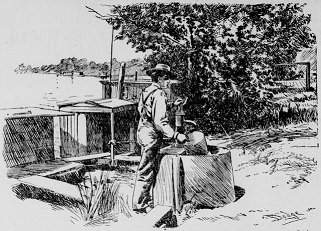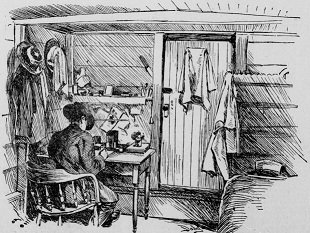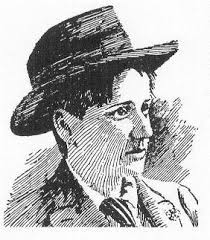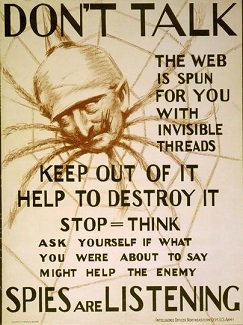Jack Bee Garland aka Babe Bean, the Trousered Enigma
Jack Bee Garland, also known as Babe Bean, Beebe Bean, and several other names besides, was born in December of 1869 as Elvira Virginia Mugarrieta. Jack [1] was the child of a former Mexican consul named José Marcos Mugarrieta and an upper class American woman. José was a former army veteran turned civil servant who was notable as having been aide to Minister of War and later President Manuel Arista. When Arista was forced from power and into exile in Europe he chose José to accompany him, returning to Mexico in 1855 after the president’s death. In 1857 he was appointed as Mexico’s first consul to San Francisco, but in 1863 he left the position and was replaced. His wife Eliza claimed later this was because he had refused to arrange for the export of American weapons to Mexico, which at the time (due to the American Civil War) was illegal. However it may just have been due to ill health, as he had been sick for several years. He stayed in San Francisco rather than return home, possibly because his wife was an American. His wife, Eliza Alice Garland, was from Texas and was the daughter of a former Louisiana congressman named Rice Garland who had resigned from the Louisiana Supreme Court in disgrace in 1846 and moved temporarily to exile in Mexico. Presumably it was during this exile that Eliza and José met. [2] Such was the chain of coincidences that led this couple together and eventually brought them to San Francisco, where Jack entered the world.
By Jack’s later account he was a stubborn and tomboyish child, and his mother had him sent to a convent to confine him and make him a respectable woman. The same account has him leave the convent aged 15 by marrying his brother’s best friend, only to divorce him a few weeks later. Jack’s story of his early life is somewhat inconsistent though, and contains several notable falsehoods. We don’t even know if he really had a brother, though he did have a sister (named Victoria). His account also leaves out the death of his father when he was seventeen, which would probably have had quite an affect on him. What we do know is that at some point in the late 1880s or early 1890s, Jack left home and set out to live a vagabond life on one of the last American frontiers.

In August of 1897 Jack was arrested in the town of Stockton, California, for the “crime” of cross-dressing. Laws such as this had first begun appearing in America during the 1840s and had spread across the country during the Civil War, partially prompted by stories of women dressing as men and joining the armies on either side. Jack had arrived in Stockton in July and was living in a houseboat (referred to in the papers as an “ark”) for about a month before his address. Though he dressed as a man, his complicated gender was apparently pretty obvious to the locals and the police had been searching for him for some time. They finally picked him up as he was walking to church to listen to a musical recital.
For some reason, when Jack was arrested he told the police (in writing) that he was mute. He claimed to have lost the ability to speak due to a “fit of anger” several years earlier. This may have been true, or it may have been a ploy to gain sympathy, or it may have been because he was afraid he had a trace of his father’s accent still in his speech. Jack’s racial identity was as complex as his gender, in some ways. His father was probably a “criollo”, someone of primarily European Spanish heritage. At any rate, Jack either was racially “white” or was able to pass as such, though to many Americans at the time (and still) anyone of Hispanic heritage was automatically non-white. Regardless, his treatment would have probably been far less kind if he had revealed his Mexican heritage. Instead Jack gave a surname of English origins, and while he used different surnames later he would stick to English ones.
The name he gave was “Babe Bean”, and his treatment does seem to have been extraordinarily sympathetic. Jack must have possessed a great deal of charm, as though both the police and the reporters who interviewed him were initially sceptical, Jack seems to have won them over pretty easily. The San Francisco Call rhapsodised over him as a “modern Roslind”. Jack was smart enough to play on this sympathy, knocking eight years off his age and spinning a bad luck story that explained why “a girl from one of the best families in the land” would be traveling around in masculine garb. Jack declined to name that family, of course. He also was careful to portray his “cross dressing” as of having been born of necessity, as opposed to personal preference, though it was still looked at askance by some. Still, the fact that he “admitted” to being a woman wearing man’s attire and insisted he had not meant to “deceive” people into thinking him a man was enough to let him avoid any legal consequences.

There are enough echoes of truth in Jack’s story that it’s generally taken to have some basis in fact, though parts (such as his age) are obviously fabrication. Jack describes his father as “dark, handsome and noble”, and refers to him as a “hero”, and describes his love for his parents as “the only love I ever knew”. (Jack may well have been asexual as well in fact, as there are no records of him having paramours of either gender.) Jack described (in writing) being raised on tales of his parents’ travels, and of conceiving his own wanderlust at that time. It is from this account also that we get the story of him being confined in the convent, and of his marriage to his brother’s friend to escape. Jack gave no reason for the marriage’s end after six months, but did say that his actions led to an estrangement from his family that ended with his brother’s death and with his mother’s own retreat into a convent after “making provision for me”. It does seem that Jack may have enjoyed some private income, as he doesn’t seem to have been driven to work too hard to survive. His story was rounded out with several tales of his exploits during his wandering – finding a gold bracelet lost in a mountain stream, inadvertently running into a group of train robbers, and other such tall tales.
Jack’s story (and charisma) caught the attention of California and he became somewhat of a local celebrity over the next few years. His male dress was tolerated, which led to a war of letters in the local papers when a group of suffragettes complained that he was permitted to dress as a man and they were not. Jack responded somewhat dryly by telling them where boy’s clothing could be bought on sale. His writing skills and his notoriety got him a job for a while writing for the local Stockton paper (as “Babe Bean”), and he was made an honorary member of the local bachelor’s club. One paper dubbed him “the trousered enigma”. He stayed in Stockton (on board his “ark”) for some time, though by May of 1898 he had moved on. We know that as he sent a letter back to Stockton at that time telling his friends there that he had been involved in a carriage accident near Sonora and that this had “resulted in the complete restoration of her power of speech”.

Jack next appeared in 1899, this time under the name of “Beebe Beam”. At the time the US was at war in the Philippines, and Jack hoped to continue his writing career by covering the conflict from a soldier’s eye view. He headed over there on the soldier transport ship City of Para, by getting a job as a cabin boy. Unfortunately he fell ill, and he was discovered. When the captain found out Jack’s assigned sex, he was imprisoned and then put off the boat in Hawaii. However the soldiers were impressed by Jack’s bravery and banded together to raise the money to pay for his passage. When the captain refused to allow him back on board, they just banded together and smuggled him onboard. He was discovered once again and the captain had him locked up, but when the boat reached Manila the soldiers just broke him out again.
His time in the Philippines changed Jack, and not just in the various tattoos he picked up. He sent stories back to the US, sometimes under a man’s name and sometimes under a woman’s – whichever best fit the viewpoint he wanted to convey. Outside of writing, he also acted as a Spanish translator wherever needed. He hadn’t forgotten the language taught to him by the father he loved. His main employment seems to have been as a military nurse though, and in that capacity he participated in several military engagements. Seeing the suffering up close, and working to alleviate it, was probably what set the course of the rest of his life.
Jack returned to America in 1900. (There’s an occasionally told story that Jack was arrested and committed when he came back from the Philippines, but this seems to be entirely false.) He wrote up the full story of his adventures and sold it to the San Francisco Examiner, but they repackaged and rewrote it, selling it as “the adventures of a woman soldier”. It might have been this that drove Jack away from journalism. For a time he tried living as a woman, but it wasn’t long before he resumed a male identity, under the name of “Jack Bee Garland”. This was the name he lived under for the next thirty five years, and in that time he did his best to make the world a better place. Jack worked for the American Red Cross as a nurse, notably during the San Francisco earthquake and fire of 1906. In addition to being a nurse, he also became a social worker. He was especially involved in charities helping the homeless, perhaps in memory of his own time without fixed abode. “Uncle Jack” became a well known and much loved figure around San Francisco, and none ever realised that the small man with the tattoos was the one-time “trousered enigma”.

This might not be the last time Jack was forced to resume the identity of “Beebe Beam”, though. As 1917 came to a close, a Californian district attorney named George W Smith was on the trail of a mysterious woman dubbed “Madame H”. She was the leader of a ring of German spies operating along the west coast of America, and was linked to a recently arrested spy named Franz Schulenberg. Schulenberg was identified by Smith’s agents and arrested in November of 1917. In his possession was a vast quantity of dynamite, along with guns, false uniforms and plans of bridges. He was questioned, but he could only name his superior as “Madame H”. On the 29th December 1917 somebody, possibly Jack, had the misfortune to be arrested on Seal Beach. The police who picked them up spotted their assigned sex and thought that this “woman disguised as a man” was a prime suspect. The person gave their name as “Beebe Beam”, and under that name they were shown to witnesses to see if they were the person Schulenberg had met with. Four days later they were released without charge. If it was Jack, then fortunately this didn’t result in his Jack Bee Garland identity being compromised. The person arrested on Seal Beach wasn’t the only person who was caught up in the “Madame H” hysteria – a mentally ill woman named Elizabeth Guistorf was arrested a week later, and was also later exonerated. The real Madame H, if she ever existed, was never caught.
Jack died in September 1936, dropping dead in the street from what turned out to be peritonitis caused by a perforated ulcer. He was 67 years old. Of course, his assigned sex was discovered after his death, and one of his tattoos (an American flag and the word “Manila”) connected him back to the legend of “Babe Beam”. His sister Victoria (who was now the widow of a wealthy businessman named George Shadbourne) came forward, and so Jack’s birth name and family history was revealed. [3] Several San Francisco papers made a call for Jack to receive military honours at his funeral, but since there was no record of him having formally served this was denied. Instead, in a final indignity that Victoria gets the blame for, Jack was buried in a civilian grave in the woman’s clothing he’d shunned for the last thirty-five years.

It might be impossible for us to parse out Jack’s gender through the veil of years, but that hasn’t stopped people trying. In the decades after his death, of course the general interpretation was “a woman who dressed as a man in order to gain social advantage”. This seems a bit odd, especially when applied to his “Uncle Jack” years. Male nurses were far less common than female ones, after all. The first attempt to “reclaim” Jack came in 1979, with Elizabeth Stevens and Estelle Freedman’s documentary film She Even Chewed Tobacco. This labelled Jack as a “passing woman”, a concept of the time that saw such “historical crossdressers” as women fighting against the constraints imposed on their gender. (Nowadays this concept is seen as problematic for erasing trans identity, as the implication is that without those constraints these people would have lived as women. [4] ) The definitive biography of Jack is considered to be Louis Henry Sullivan’s 1990 biography From Female to Male: Life of Jack Bee Garland which identifies Jack as a trans man. But my personal favourite is Peter Boag’s book Re-Dressing America’s Frontier Past. Boag places Jack in the context of the many other instances of similar people at the time, but crucially he makes no judgement over Jack’s gender identification, or that of any of the other people he covers. Instead he leaves the reader to draw their own conclusions, or perhaps better yet to admit the arrogance of trying to draw such conclusion. “The trousered enigma” was not a puzzle to be solved, after all. Jack was Jack. That was good enough for Jack, and it’s good enough for me.
Thanks to Nat Newman and to TENI for help with this article.
[1] It’s always a bit tricky researching and writing about historical people whose gender failed to conform to the norms of the time, and there is a tendency for materials to try to slot them into whatever norms existed in the time of the writer. As we shall see, Jack has been subject to this more than most. Regardless, for most of his life Jack wanted people to perceive him as a man named Jack. Out of simple courtesy if nothing else, that is what we shall do. (I hope you can forgive the occasional alternate gendering in quotes from the time.) In addition Jack’s birth name is given merely as a matter of historical record, and no disrespect is intended.
[2] Rice Garland returned to the US and settled in Texas, where he was elected as a judge again and practiced as a lawyer up to his death in 1863.
[3] Victoria may have been supporting him during his charity work – though there’s no evidence for this, it would explain how she knew “Babe Bean” was her brother. Even if they were in touch, it’s understandable why the stuffy and respectable widow Shadbourne wouldn’t want her unconventional sibling in her life.
[4] It’s also intrinsically tied to a lesbian sexuality, while Jack for one seems to have been both aromantic and asexual.
